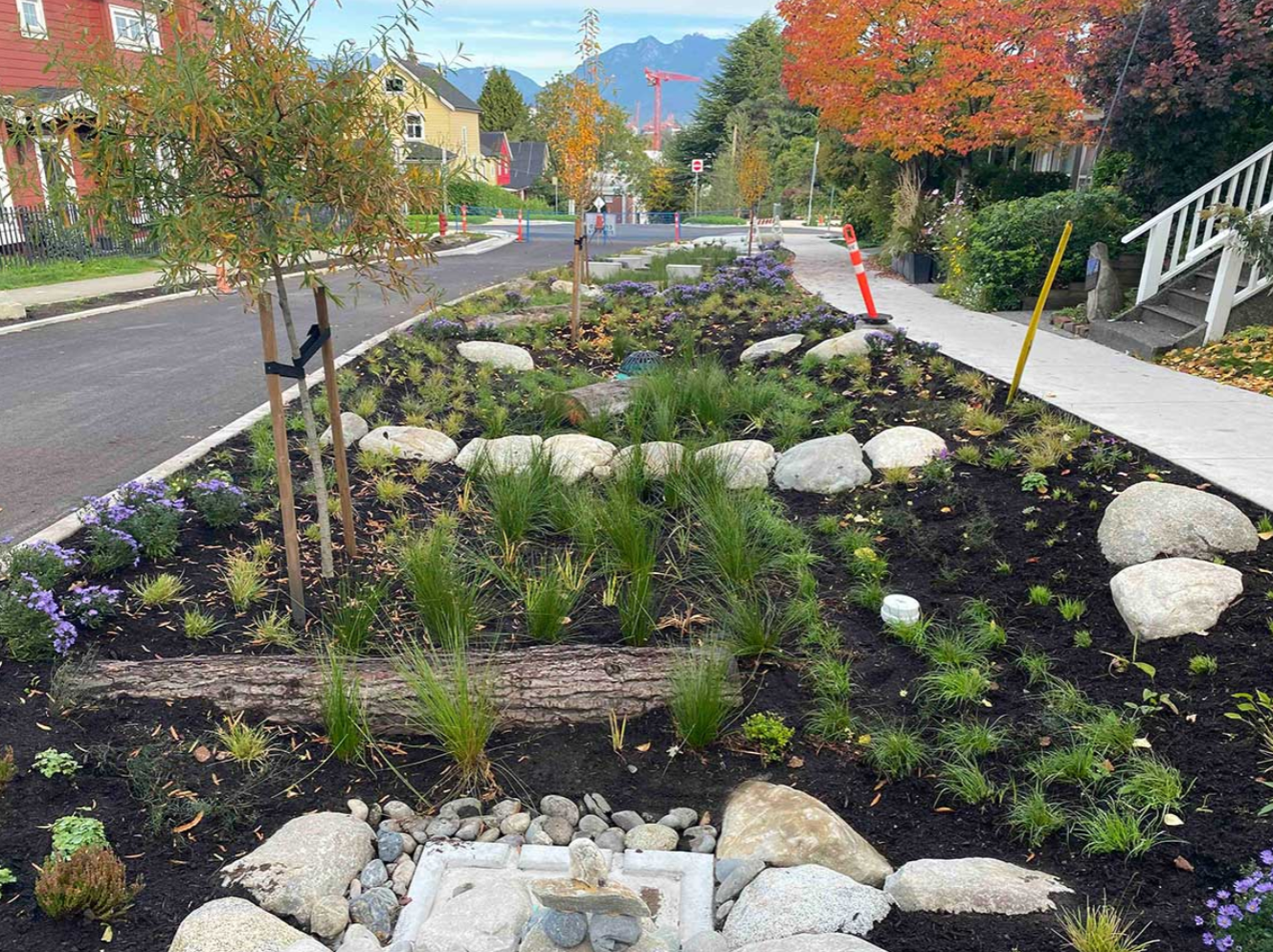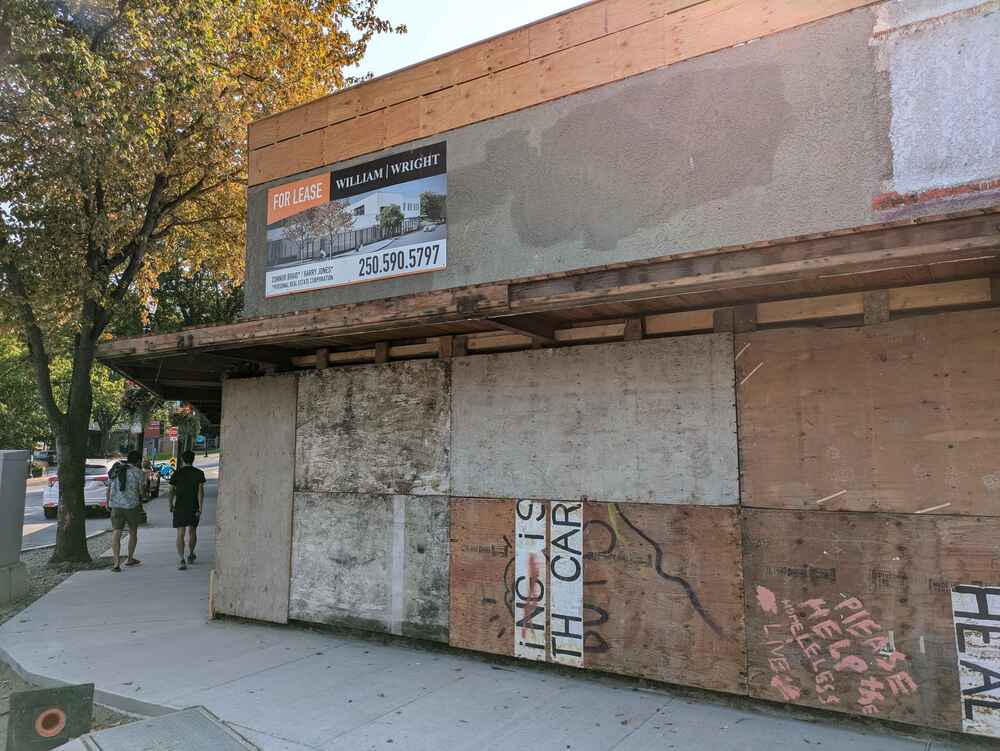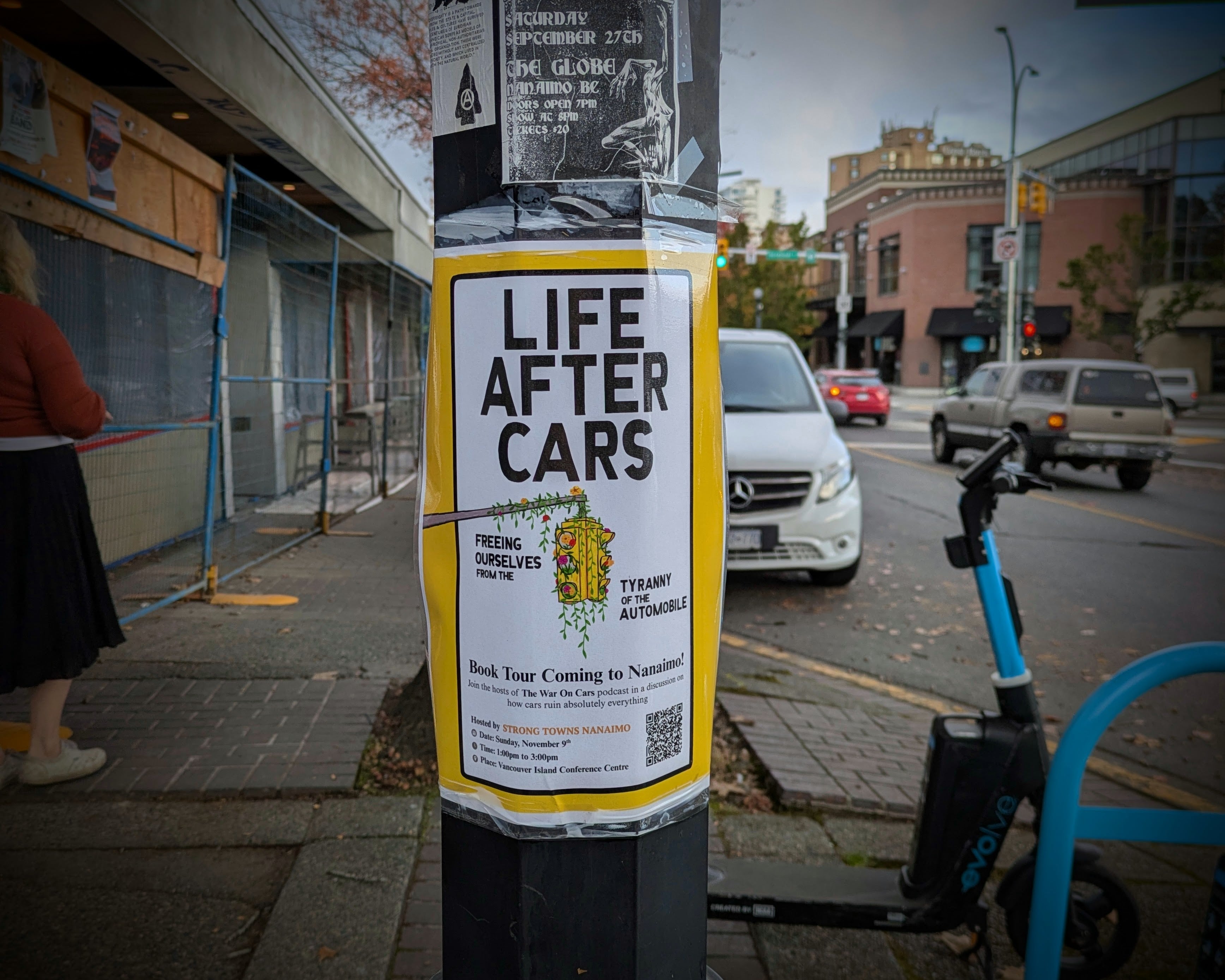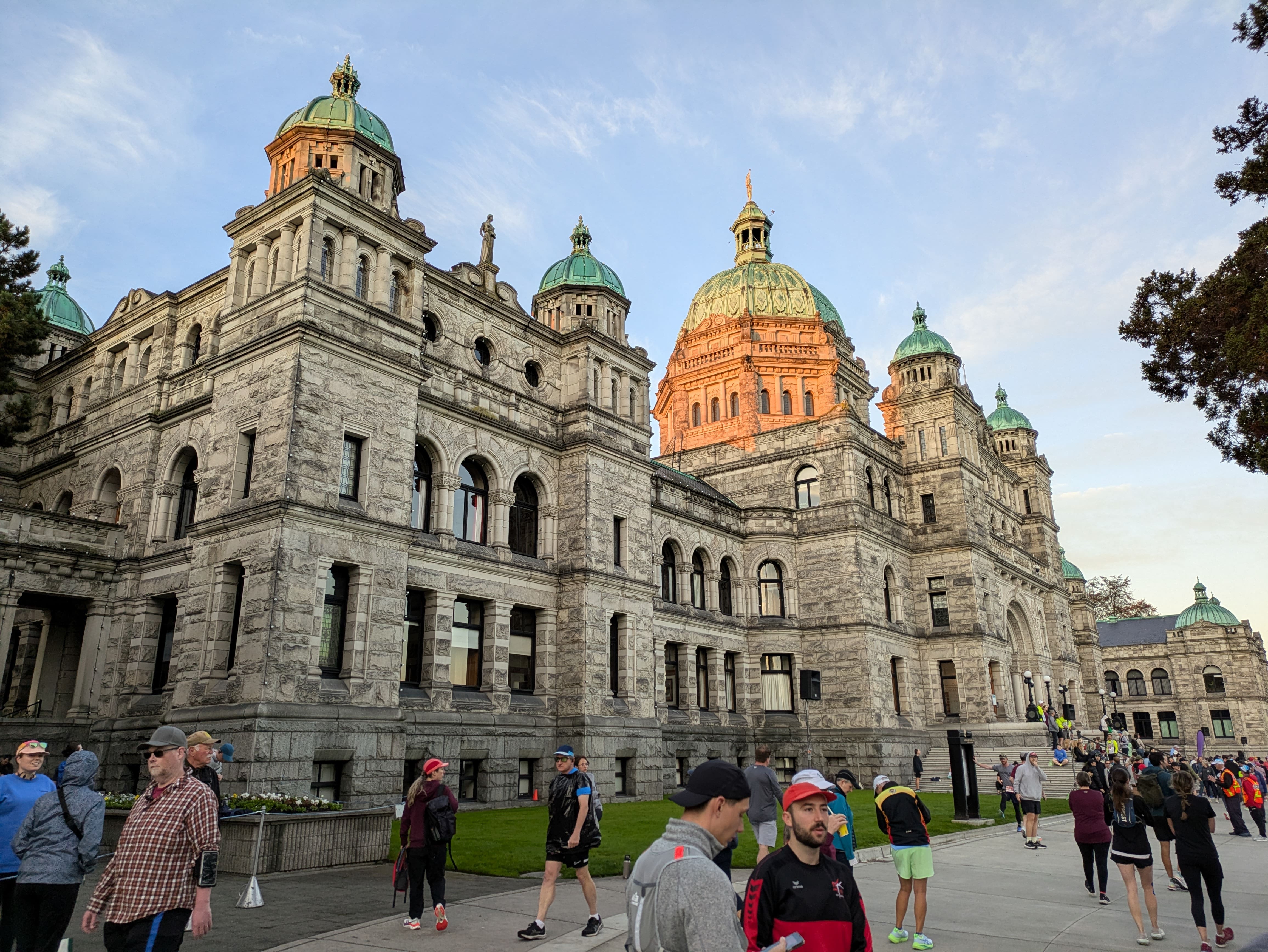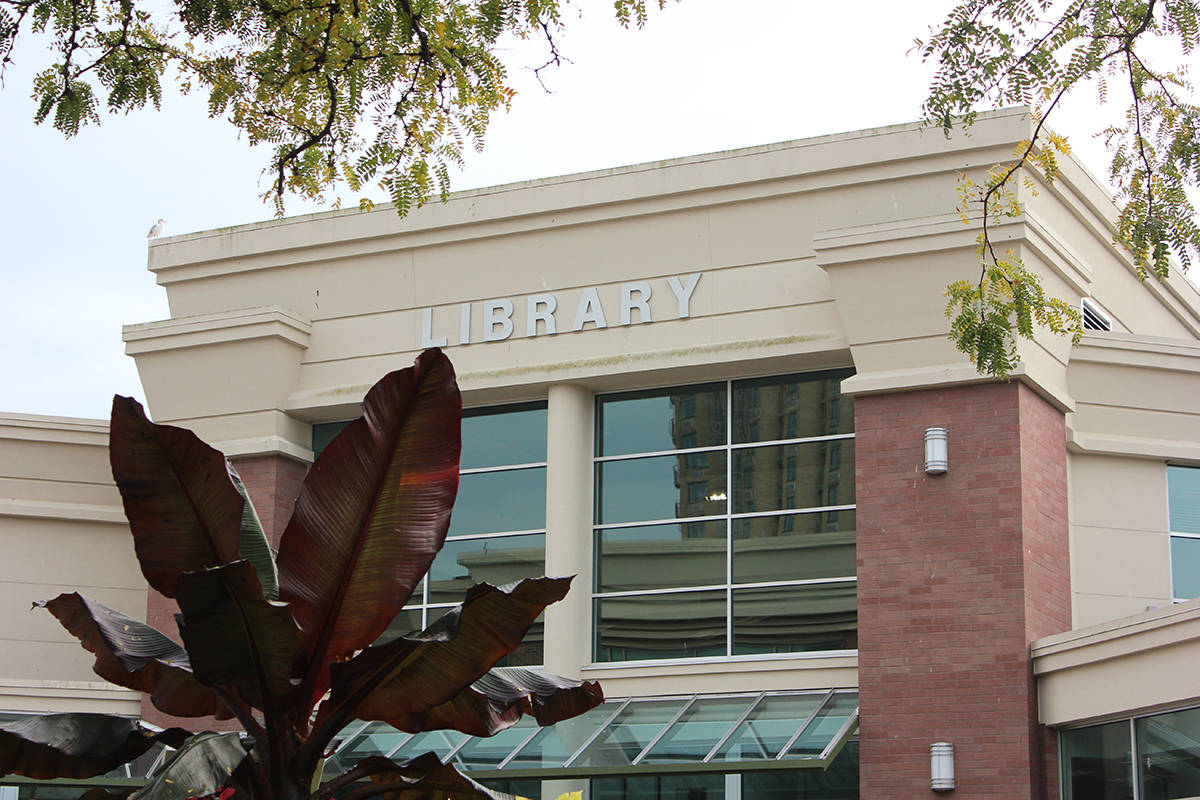There are so many of us now that we had to upgrade the venue! We had an excellent year and there’s still more to look forward to: more provincial housing legislation; more municipal infrastructure projects; more delegations. Come and chat with local Nanaimo urbanists on transit, walkability, housing affordability, climate, and more. We’re meeting in the Medium Meeting Room on the second floor.
- 1:30-3:30 pm : Meet inside the Vancouver Island Regional Library downtown
- 3:30 pm: Optional hangout for anyone who wants to grab drinks/coffee on Commercial
December 2023 Monthly Meeting Agenda
Here is our tentative agenda for today’s meetup:
- Discussion: New Housing Legislation
- Discussion: Transit Oriented Development Legislation
- Activity: Identify Poor Infra for Pedestrians, Cyclists
- Activity: Brainstorm Collective Small-Scale Action
- Meeting Minutes
Let us know if there’s something you want to talk about that’s not listed.
Discussion: New Housing Legislation
The proposed legislation will permit one secondary suite or laneway home in all B.C. communities and, in most areas within municipalities of over 5,000 people, allow for three to four units on lots zoned for single-family or duplex use, with larger lots close to transit stops potentially permitting up to six units.1 The legislation aims to streamline local planning and zoning processes, requiring municipalities to regularly update community plans and zoning bylaws to expedite housing development approvals.2
Small-Scale Zoning Amendments Across BC
The first component includes requirements for all local governments to enable small-scale multi-unit housing by requiring they update zoning bylaws to:
- Allow a minimum of one secondary suite or detached accessory dwelling unit/ADU (laneway home) in all single-family/duplex residential zones with exceptions;
- Allow a minimum of three to four dwelling units (depending on lot size) in select areas zoned exclusively for single-family residential or duplex residential, in selected areas, with exceptions;
- The prescribed size of lot is intended to be 280 square metres. This means lots less than 280 square metres would have a minimum of three permitted units, lots greater than 280 square metres would have a minimum of four permitted units.
- Allow a minimum of six dwelling units in select areas zoned for larger single-family residential lots or duplex residential lots within a prescribed distance to transit stops with frequent service, in selected areas.
- All local governments must create housing needs reports (HNRs) over 20 years, and eliminate one-off public hearings that slow down housing projects that already comply with community plans
- Municipalities must update their OCPs every five years to reflect their HNRs, and align zoning (and pre-zone) for 20 years of total housing change in their communities
The proposed legislation for three to four or six units is intended to apply on parcels of land in British Columbia that fall within urban containment boundaries and municipalities over 5,000 people. The secondary suite or detached accessory dwelling unit requirement would be legislation that would apply throughout B.C.
Timeline for Policy Implementation
A chronological timeline of key dates for when local governments will be provided with a policy implementation manual to support these initiatives, and then expected to comply with the legislation is provided below.
- Dec 2023: SSMUH policy manual provided to local governments
- Jan 2024: HNR instructions provided to local governments
- Jan/Feb 2024: Details announced for $51 million funding allocation
- June 30 2024: Munis must have updated their bylaws to accommodate SSMUHs
- June/July 2024: OCP/zoning review/update instructions provided to municipalities
- Jan. 1 2025: Local governments must have completed their interim HNR
- Dec. 31 2025: Municipalities must have completed their first review and update of their OCPs and zoning bylaws
Discussion: Transit Oriented Development Legislation
The legislation, complementing a $400 million commitment to deliver transit-centric housing, mandates municipalities to designate Transit Oriented Development Areas (TOD Areas) within 800 meters of rapid transit stations.3 Builders will be required to meet provincial height and density standards, while parking restrictions will be eased.
The legislation, part of the Homes for People action plan, aligns with a simultaneous proposal for small-scale, multi-unit housing legislation. The Province aims to support municipalities in setting standards through a provincial policy manual. Implementation is expected to begin with immediate capture of lands designated for transit-oriented growth, and local governments have until June 30, 2024, to designate TOD Areas.
Designated TOD Areas in Municipalities
Many of the specific standards for Transit Oriented Development Areas (TOD Areas), including minimum densities, will be confirmed by policy and regulation. The province describes the following FARs for medium sized municipalities:
- 200 metres or less of a bus exchange:
- Minimum density up to 3.5 FAR, minimum allowable height up to 10 storeys
- 201-400 metres of bus exchange:
- Minimum density up to 2.5 FAR, minimum height up to six storeys
Where a local government’s current zoning allows for less density than the new provincial minimum, the provincial minimum must be allowed. Local governments can still approve higher density at their discretion.
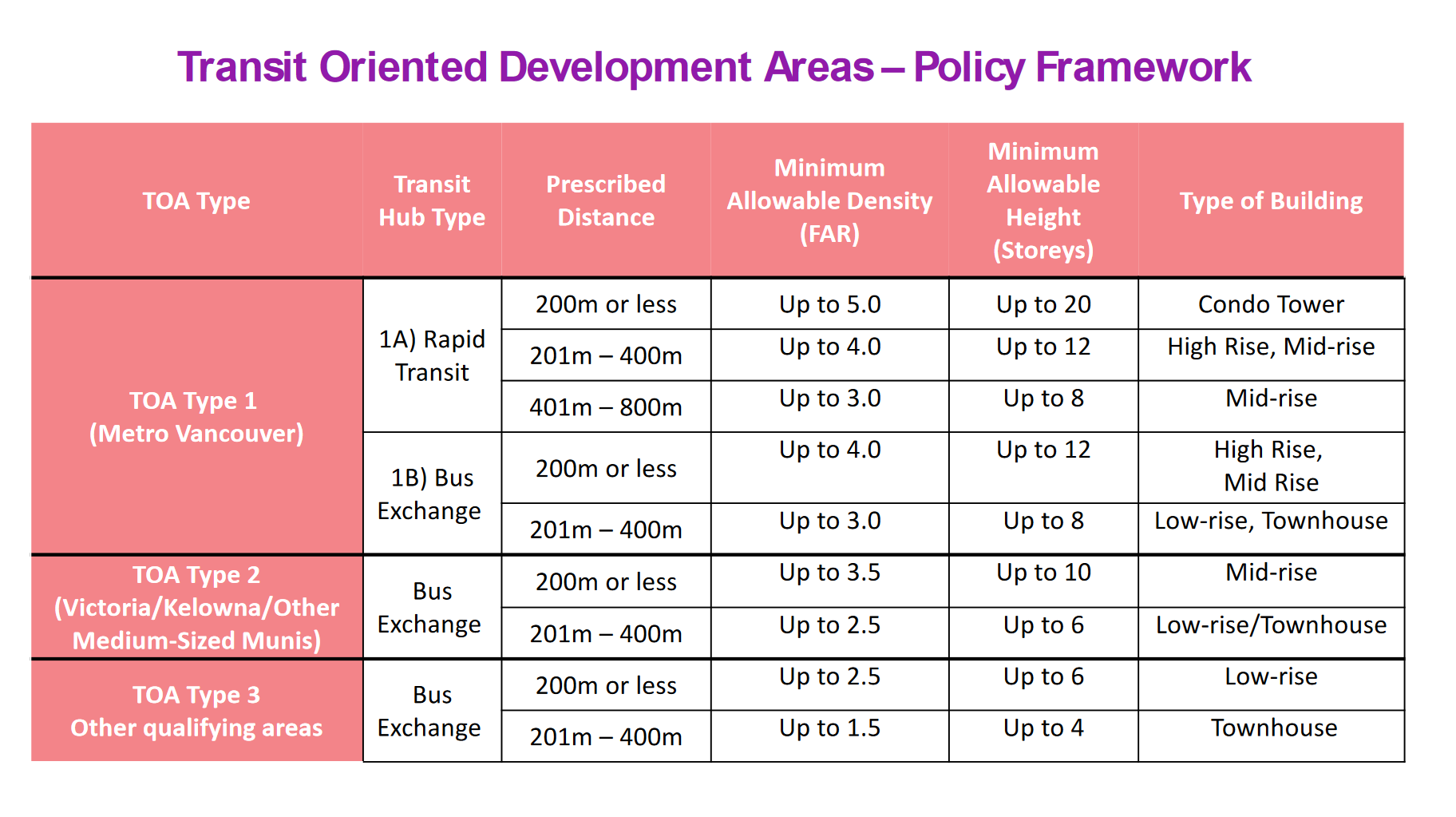 This will apply only to residential or mixed residential land use, meaning that properties that are zoned for commercial, agricultural (Agricultural Land Reserve) and industrial land uses will not apply. Federally regulated properties, such as the Vancouver International Airport, are exempt, as are First Nations reserve lands. (Government of BC)
This will apply only to residential or mixed residential land use, meaning that properties that are zoned for commercial, agricultural (Agricultural Land Reserve) and industrial land uses will not apply. Federally regulated properties, such as the Vancouver International Airport, are exempt, as are First Nations reserve lands. (Government of BC)
Activity: Identify Poor Infra for Pedestrians, Cyclists
Together we’ll use this map to identify pedestrian and cycling infrastructure that is unsafe or inequitable for Nanaimo residents. The resulting map will be provided to Mayor and Council afterwards.
You can return to the Strong Towns Nanaimo website at any time to view this map.
Activity: Brainstorm Collective Small-Scale Action
A big part of the Strong Towns movement is small-scale community action. I want us to brainstorm community actions that can improve our community. Some ideas:
- Assessment rides along bikeways around town to provide feedback to the City
- Regular park cleanups around town (Bowen Park, Colliery Dam Park, etc)
- Parking lot pop-up park – take over parking spots at Port Place and have games
Thank you all for attending this month’s meeting. Strong Towns Nanaimo wishes you all a warm and pedestrian-oriented Holiday season. See you all next year!
– Strong Towns Nanaimo Team
Meeting Minutes
The following are notes from the meeting:
- Much of Nanaimo is not well-served by public transit
- Hammond Bay route is heavily subsidized as Hammond Bay lacks density
- The South-End, an area of town with solid density, is under-served by transit
- Infrequent routes and sporadic service across the South-End area of town
- Some municipalities have begun constructing housing themselves
- https://vancouversun.com/news/local-news/bc-municipalities-set-up-housing-authorities
- Burnaby’s new housing authority will be building units; 50% rent market targets
- Perhaps Nanaimo can do something similar: create a housing authority and build homes
- Everyone, and all walks of life, consider housing affordability a core issue right now
- There is a substantial lack of community garden spaces in Nanaimo
- https://www.nanaimo.ca/parks-recreation-culture/parks-trails/community-gardens
- Nanaimo does have a framework for the creation and preservation of gardens
- Check out our guidelines and Community Gardens Policy for more information.
- The city should be proactive in allowing for the creation of new community gardens
- https://www.nanaimo.ca/docs/recreation-parks/parks-trails/communitygardenspolicy.pdf
- Book recommendation: Palaces for the People by Eric Klinenberg
- Parks in general lack the characteristics of a good public park space
- They lack a diversity of trees, ponds, waterways, playgrounds, and more
- Strong Towns Nanaimo should adopt a park and volunteer to care for our existing greenspaces
- https://www.nanaimo.ca/get-involved/volunteer/partners-in-parks
- Allow residents to care for and improve parks with provided municipal funding
- Nanaimo is installing “smart” intersections around town
